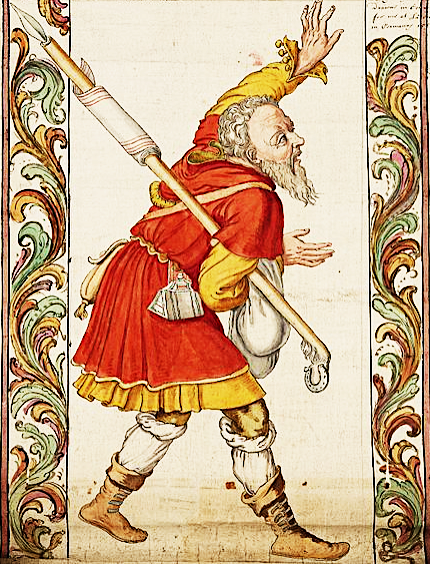George Ripley was the son of John De Rypon and born circa 1415 in Ripley, Yorkshire, and died in 1490 in Boston, Lincolnshire England. The biographical facts of his birth death secure Ripley as a real person, not a myth or pseudonym for a hidden identity. The fact that Ripley was a Canon of the Priory of St Augustine, Bridlington, is significant, as the status of Canon was conferred on upon him, a Canon of the church is an official, who may, or may not be a priest, but is responsible for the business and legal affairs relating to their cathedral, which was York cathedral, at the time, one of the most significant Cathedrals in England, not just for its size and stature, but also its political role in supporting the King. The title bestowed indicates Ripley was well considered by the Church and his peers, even whilst he was studying and publishing texts on alchemy.
On invitation of the Pope, by a papal letter dated 1458–1459,1 it was declared that “George Ryphey. . . a canon of the Augustinian monastery or priory of Bitzidlington . . . in the diocese of York…. is granted the right to leave his priory and to dwell for seven years in an university, even without the realm of England, and study theology,”. The Pope at this point was Pope Pius II, known as an Italian humanist. Where in Renaissance Italy, there was a resurgence in the study of the classics including, the Aristotelian art of rhetoric, and amongst other things, history, poetry, and moral philosophy. This began almost a decade of Ripley studying and working in France, Germany and Italy, culminating in working in the Vatican and being appointed a chancellor by Pope Innocent VIII.
It was during his travels in Europe that Ripley produced two important texts, The Compound of Alchymy, which he dedicated to Edward IV in 1471, which was also known as The Twelve Gates. The Compound was not written in Latin, but in middle English Verse (Rampling 481). The second text being The Medulla of Alchymy or The Marrow of Alchemy, which was more focussed on laboratory alchemy. In the preface of The Compound, Ripley declared that all he had written about alchemy before his departure to Europe could be “safely ignored”.
When back in England, Ripley continued with his alchemical work, and adopted Thomas Norton as an initiate. It is in this period that Ripley is reputed to have given large sums to the Knights of St. John of Jerusalem. However, at this point, in Bridlington, his alchemical work was less supported by the Abbot and other Canons, and he was released from the order, and joined the Carmelites in Boston, Lincolnshire where he died in 1490.
Ripley is one of the most influential alchemists of the early modern period (Rampling 479). With the production of The Compound and The Medulla, Ripley provided two texts that were more accessible that those produced by most alchemists and although his texts were originally produced in Middle English in the following centuries they were translated into Latin, French and German and widely disseminated and discussed in Europe in the following two centuries. Ripley’s work attracted the attention of, amongst others, John Dee, Robert Boyle, Isaac Newton and George Starkey, who in the 17th century, writing under his adept name of Eirenaeus Philalethes, developed a new elaboration of Ripley’s work. Rampling (480) suggests that a cause of Maier’s inclusion of Roger Bacon in his Symbola Aureae Mensa in, was a reflection of the esteem of English alchemy, to which George Ripley made a significant contribution. It is the clarity in the descriptions of the alchemical processes, they influenced thought from the 15th century to today.
Another interesting aspect of Ripley’s legacy is the line of transmission. In alchemical circles it is believed that without an adept, it is impossible to achieve the ultimate goal of the production of the philosophers’ stone. Ripley himself in the preface of The Compound reflected on the importance of his studies in Italy and the ‘Doctor’ that showed him the alchemical processes of calcination and fermentation. This Suggests that Ripley found his own adept and then emanating from the body of Ripley’s work, it is believed there exists an unbroken line of adepts and initiates that continued to, and
beyond, Frater Albertus Spagyricus, born as Albert Richard Riedel in 1911 and died in 1984. Frater Albertus developed a system of teaching alchemical concepts and had a profound effect on the way alchemy and particularly the Spagyric method was disseminated in Paris and Australia up to today.
Another aspect that illustrates the importance of studying the contributions of alchemy is that expounded by Carl Gustav Jung and his interpretation of is the relationship between the alchemy and psychology. Jung’s interest in alchemy is disseminated in three volumes the first being psychology and Alchemy, originally published in 1944, reveals dreams and alchemical symbolism. Jung considered alchemy to be central for depth psychology. Stein (28) reflects that in alchemy Jung discovered images and ideas that strongly aligned with his own insights of psychological life the unconscious. Generations of psychologists trained in the Jungian traditions have accepted the important foundations alchemy has played in the understanding of the psyche.
Today it is accepted that alchemy was the foundation of the development of many chemical processes. It contributed to the understanding of how to refine metal ores, the making of gunpowder, as well as the production of glass and ceramics. Other developments such as leather tanning, and the production of inks, dyes, and paints can all be traced back to alchemical laboratory experiments. The modern links with psychology and how we understand human development is also grounded in the examination and interpretation of alchemical treatises and it given the corpus of alchemical, allegorical and symbolic text, who can say with certainty that there is not more to be learned from further studies into alchemical texts and the descriptions of laboratory, spiritual and philosophical alchemy.
- J. A. Twenlow, Calendar of Entries in the Papal Registers Relating to Great Britain and Ireland: Papal Letters, vol. XI: 1455–1464 (London: HMSO, 1893), 530–31.
- Bibliography
Dobson, Rob, B. Cathedral Chapters and Cathedral Cities: York, Durham and Carlisle in the Fifteenth Century, Northern History, 19:1, 15-44, DOI:10.1179/nhi.1983.19.1.15 (1993) web - Faivre, Antoine, and Jacob Needleman. Modern esoteric spirituality. Vol. 21. Crossroad, 1992. Print
- Hanegraaff, Wouter, J. Western Esotericism: A Guide for the Perplexed. London: Bloomsbury 2013. Print.
- Jung, Carl G. Psychology and Alchemy (2nd ed.). Routledge. 1969. Print https://doi.org/10.4324/9781315725369
- Magee, Glenn Alexander. “The Cambridge Handbook of Western Mysticism and Esotericism.” Cambridge: CUP (2016). Print
- Maier, Michael. Symbola aureae mensae duodecim nationum. Vol. 1297. Typis Antonij Hummij, impensis Lucae Iennis, 1972. web
- Rampling, Jennifer M. “Transmission and Transmutation: George Ripley and the Place of English Alchemy in Early Modern Europe”. Early Science and Medicine 17.5 (2012): 477-499. https://doi.org/10.1163/15733823-175000A2 Web.
- Stein, M. (2005), Some reflections on the influence of Chinese thought on Jung and his psychological theory. Journal of Analytical Psychology, 50: 209-222. https://doi.org/10.1111/j.0021-8774.2005.00524.x web.


